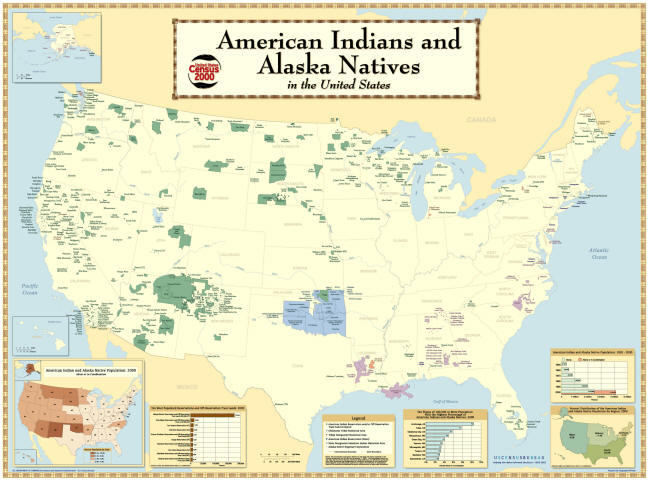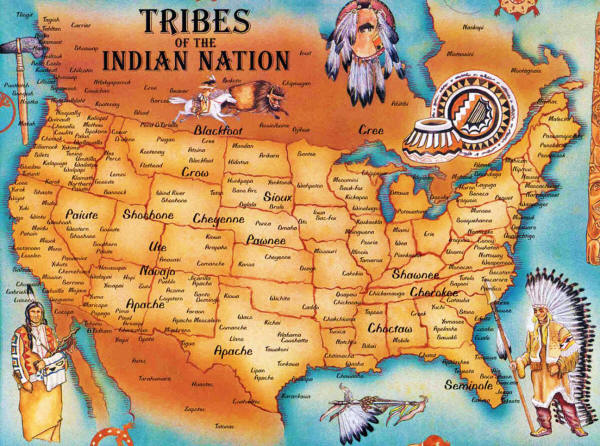|

by Joanna Gillan
(April Holloway)
January
20, 2017
from
Ancient-Origins Website

By the age of 10, most children in the United States have been
taught all 50 states that make up the country.
But centuries ago, the
land that is now the United States was a very different place. Over
20 million Native Americans dispersed across over 1,000 distinct
tribes, bands, and ethnic groups populated the territory.
Today, Native Americans
account for just 1.5 percent of the population, and much of their
history has been lost, particularly as today's education system is
sadly lacking when it comes to teaching the rich and complex history
of the United States.
Here we examine
little-known facts about Native Americans, which should be included
in every history book.
Tribes
As of January, 2016, there are 566 legally recognized Native
American tribes in the United States, as determined by the Bureau of
Indian Affairs.
Prior to European contact, there were over 1,000 tribes, bands or
clans, but sadly, some were completely extinguished as a result of
disease epidemics or war.
Today, there is not a single accurate historical map that reflects
the location of Native American tribes in North America in a single
time period, as the post-European contact situation was ever
changing, with contact occurring at different times in different
areas.
From the 16th through the 19th centuries, the
population of Native Americans sharply declined from approximately
20 million, to a low of 250,000. Today, there are approximately 2.9
million Native Americans in North America.
As of 2000, the largest groups in the United States by population
were Navajo, Cherokee, Choctaw, Sioux, Chippewa, Apache, Blackfeet,
Iroquois, and Pueblo.

Tribes of the Indian Nation.
(Emerson Kent)
Regions
Native American tribes in the United States are typically divided
into 8 distinct regions, within which tribes had some similarities
across culture, language, religion, customs and politics.
-
Northwest
Coast - Native Americans here had no need to farm as
edible plants and animals were plentiful in the land and
sea. They are known for their totem poles, canoes that could
hold up to 50 people, and houses made of cedar planks.
-
California
- Over 100 Native American tribes once lived there. They
fished, hunted small game, and gathered acorns, which were
pounded into a mushy meal.
-
The Plateau
- The Plateau Native Americans lived in the area between
Cascade Mountains and the Rocky Mountains. To protect
themselves from the cold weather, many built homes that were
partly underground.
-
The Great
Basin - Stretching across Nevada, Utah, and Colorado,
the Native Americans of the Great Basin had to endure a hot
and dry climate and had to dig for a lot of their food. They
were one of the last groups to have contact with Europeans.
-
The Southwest
- The Natives of the Southwest created tiered homes made out
of adobe bricks. Many of the tribes had skilled farmers,
grew crops, and created irrigation canals. Famous tribes
here include the Navajo Nation, the Apache, and the Pueblo
Indians.
-
The Plains
- The Great Plains Indians were known for hunting bison,
buffalo and antelope, which provided abundant food. They
were nomadic people who lived in teepees and they moved
constantly following the herds.
-
Northeast
- The Native Americans of the Northeast lived in an area
rich in rivers and forests. Some groups were constantly on
the move while others built permanent homes.
-
The Southeast
- The majority of the Native American tribes here were
skilled farmers and tended to stay in one place. The largest
Native American tribe, the Cherokee, lived in the Southeast.

Native American indigenous cultures map
by Paul
Mirocha .
Languages
It is estimated that there were around one thousand languages spoken
in the Americas before the arrival of the Europeans.
Today, there are approximately 296 indigenous languages across North
America.
269 of them are
grouped into 29 families, while the remaining 28 languages are
isolates or unclassified.
None of the native
languages of North America had a writing system.
However, the spoken
languages were neither primitive nor simple. Many had grammar
systems as complex as those of Russian and Latin.
There was (and is) enormous variety between the languages.
Individuals from clans or tribes just one hundred miles apart may
have been completely unable to communicate by speech. Neighboring
tribes often used a form of sign language to communicate with each
other.
According to UNESCO, most of the indigenous languages in North
America are critically endangered, and many are already extinct.
In the United States, the Navajo language is the most spoken Native
American language, with more than 200,000 speakers in the
Southwestern United States.
Only 8 Native American languages in the United States have a
population of speakers large enough to populate a medium-sized town.
These are,
-
Navajo
-
Cree
-
Ojibwa
-
Cherokee
-
Dakota
-
Apache
-
Blackfoot
-
Choctaw
Less than 20 Native
American languages in the United States are projected to survive
another 100 years.

Native American tribe language map.
(flickr)
References
|





